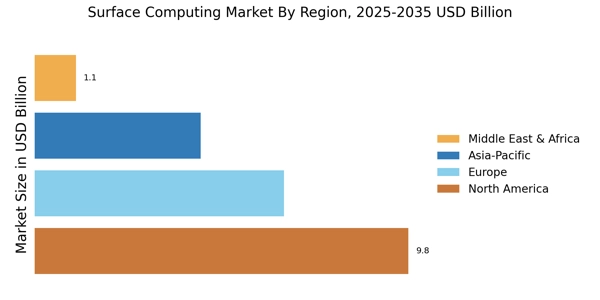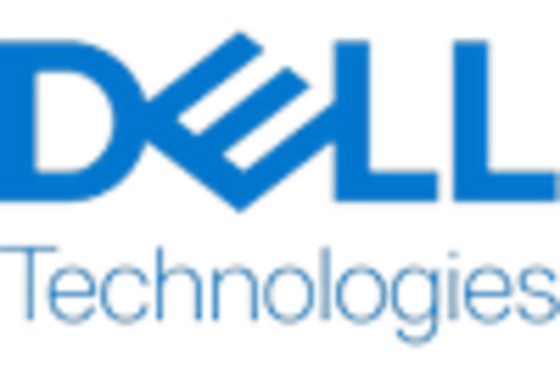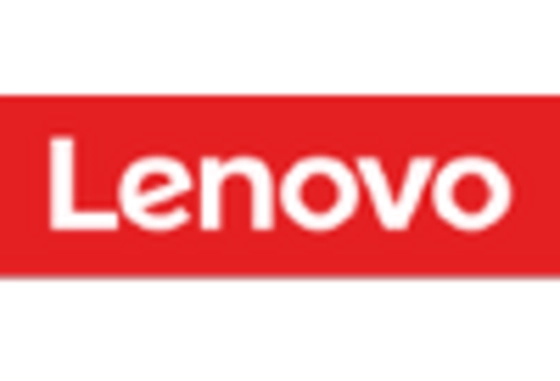The Surface Computing Market is currently characterized by a dynamic competitive landscape, driven by rapid technological advancements and evolving consumer preferences. Key players such as Microsoft (US), Apple (US), and Samsung (KR) are at the forefront, each adopting distinct strategies to enhance their market positioning. Microsoft (US) continues to emphasize innovation through its Surface line, focusing on integrating advanced features that cater to both professional and personal use. Apple (US), on the other hand, leverages its ecosystem to create seamless experiences across devices, while Samsung (KR) is expanding its reach through strategic partnerships and product diversification, particularly in the tablet segment. Collectively, these strategies contribute to a competitive environment that is increasingly focused on user experience and technological integration.
In terms of business tactics, companies are increasingly localizing manufacturing and optimizing supply chains to enhance efficiency and responsiveness to market demands. The Surface Computing Market appears moderately fragmented, with several players vying for market share. However, the influence of major companies like Microsoft (US) and Apple (US) remains substantial, as they set benchmarks for innovation and quality that smaller competitors strive to meet. This competitive structure fosters an environment where agility and adaptability are crucial for success.
In August 2025, Microsoft (US) announced the launch of its latest Surface Pro model, which features enhanced AI capabilities aimed at improving user productivity. This strategic move not only reinforces Microsoft's commitment to innovation but also positions the company to capture a larger share of the professional market, where demand for advanced computing solutions is on the rise. The integration of AI into their devices is likely to set a new standard in the industry, compelling competitors to accelerate their own technological advancements.
Similarly, in September 2025, Apple (US) unveiled its new iPad Pro, which incorporates advanced augmented reality features designed to enhance creative workflows. This development underscores Apple's strategy of leveraging its hardware-software ecosystem to deliver unique user experiences. By focusing on augmented reality, Apple (US) aims to differentiate itself in a crowded market, potentially attracting a new segment of users interested in creative applications.
In October 2025, Samsung (KR) announced a partnership with a leading software developer to enhance its Galaxy Tab series with enterprise-level security features. This collaboration is indicative of Samsung's strategy to penetrate the business sector more effectively, addressing growing concerns around data security in mobile computing. Such partnerships not only enhance product offerings but also position Samsung (KR) as a formidable player in the enterprise market, where security is paramount.
As of October 2025, the Surface Computing Market is witnessing trends that emphasize digitalization, sustainability, and AI integration. Strategic alliances are increasingly shaping the competitive landscape, as companies recognize the value of collaboration in driving innovation. Looking ahead, it appears that competitive differentiation will evolve from traditional price-based competition to a focus on innovation, technology integration, and supply chain reliability. This shift suggests that companies that prioritize these aspects will likely emerge as leaders in the Surface Computing Market.


















Leave a Comment